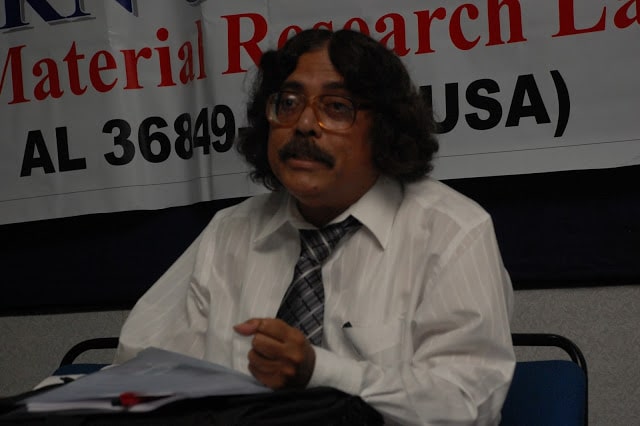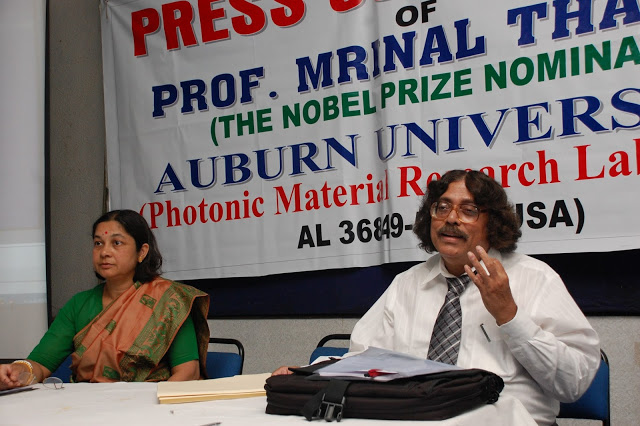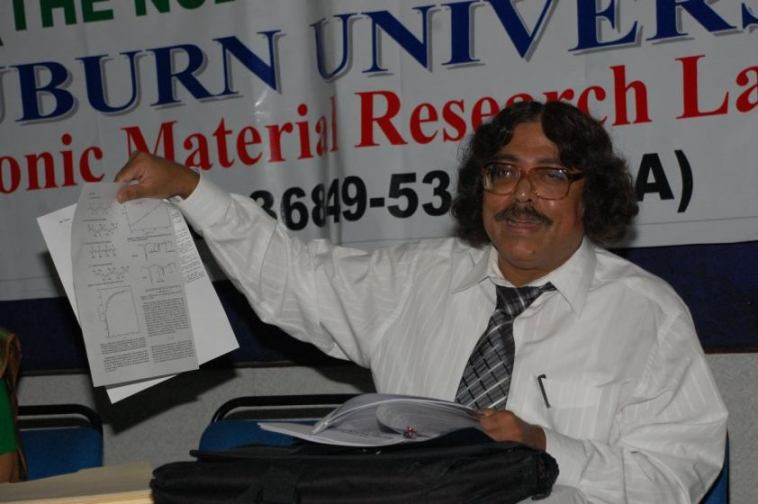Nuclear Reactors / Power Plants Must Be Sealed Up Using Novel Polymer-Based Technology To Assure Safe Operation And Protection From Radiation

As India is commissioning a large number of nuclear power stations for peaceful purposes, the issues of health risks and danger to ecology also assumes great significance as plugging radiation and emission of radioiodine from there has not been addressed.
Referring to the earlier cases of radiation disasters of Fukushima of Japan and Chernobyl of Russia, the Director of Photonic Materials Research Laboratory at Auburn University of USA, Professor Mrinal Thakur said Indian public should not allow commissioning of such power facilities without sealing of emissions through scientific means.
Professor Thakur, nominated 19-times for the Chemistry Nobel Prize, demands immediate sealing of iodine from such power stations with the “Non-conjugated” conductive polymer-based protection technology. These polymeric shields will protect lives and the environment, and reduce or avoid the exposure to humans in case of iodine releases from nuclear reactors: in normal day-to-day operations, due to accidents, and in disasters up to the magnitude of Fukushima-Daiichi and Chernobyl.

Regretting the Department of Atomic Energy of Indian Government, though initially agreeing to use such protective filaments, finally did not commission it in nuclear power stations, Professor Thakur said the Narendra Modi Ministry must take immediate action to protect human lives, environment and ecology.
He said the government must consider protection of power stations immediately as a day wasted in the implementation of safety measure means a day of living under threat of radiation fallout as any natural calamity like flood or earthquake can cause fissures in the walls of such power facilities allowing radioactive elements to freely escape to the environment.
Professor Thakur has sought the intervention of the Prime Minister Narendra Modi for initiating immediate result-driven actions to his proposals in this regard. Regretting his proposal to the government for protecting reactors with non-conjugated conductive polymer filaments is lying unaddressed since 2012.
Bringing up the issue on violation of human rights resorted to by the Nobel Prize Committee of Sweden (discussed in the following), Professor Thakur said the Prime Minister did injustice to him by publicly praising Moerner, Betzig and Hell who plagiarized from his work in relation to 2014 Nobel Prize in Chemistry.
Demand for Resolution of Four Long-standing Critical Issues
Professor Thakur demands immediate acknowledgement of his “Non-conjugated” conductive polymers works by the Royal Swedish Academy of Sciences.
As established earlier, the central equation of the 2014 Nobel document is from earlier works on nonlinear optics by Professor Thakur. The Judge of an US court referred to this equation (equation 3 of the Nobel document of 2014) as “Thakur’s Equation” which is Δ = λ/(2nsinα(1 + I/Is)1/2), where Δ stands for resolution and I stands for laser light intensity. The Judge made this reference in response to a case of plagiarism filed by Professor Thakur against the 2014 Chemistry Nobel Laureates and their employer Universities.
As unbelievable it may sound, the Judge ruled: there is no law against plagiarism in California, USA. In subsequent official communications, Stanford and UC Berkeley (where Moerner and Betzig work) both passed the blame of plagiarism to The Max Planck Institute in Germany (where Hell is employed).
Most importantly, what violated the academic and ethical norms is that no credit was given to Professor Thakur by the Nobel Committee for his equation and the underlying experimental and theoretical works in nonlinear optics that he performed to arrive at this equation.
The 2000 Chemistry Nobel Prize was awarded for the discovery of Conductive Polymers. The Royal Swedish Academy of Sciences gave the award only to those who discovered “Conjugated” conductive polymers excluding Professor Thakur who discovered “Non-conjugated” conductive polymers.
Alan Heeger, A.G. MacDiarmid and H. Shirakawa, the 2000 Chemistry Nobel Laureates, made fundamentally nonfactual statements in their Nobel documents that only conjugated polymers can be electrically conductive.

Legal communications involving US attorneys have established that they agreed that Professor Thakur’s experimental works and theory are fundamentally correct while theirs are incorrect!
Professor Thakur demanded immediate resolutions on the issues:
- No credit was given to Professor Thakur in 2000 Nobel Prize and afterwards for his discovery of “Non-conjugated Conductive Polymers.”
- The Royal Swedish Academy of Sciences is yet to correct the document preserved at the Nobel Foundation website that a polymer must be conjugated to be electrically conductive which is nonfactual and the corresponding theory as given is incorrect.
- Professor Thakur’s research funding was abruptly stopped in 2003 as he brought up the incorrectness and inequity regarding the 2000 Nobel Prize in Chemistry.
- Professor Thakur stakes claim to the 2014 Nobel Prize in Chemistry as well since “Super-resolved Fluorescence Microscopy” (2014 Nobel in Chemistry)is primarily based on earlier nonlinear optical experimental and theoretical studies performed by Professor Thakur and colleagues on organic materials.
Professor Thakur earlier sought intervention of Prime Minister Modi, Prime Minister Lofven of Sweden, and President Trump of USA in resolving these critical issues but nothing positive has transpired. Are the Nobel Committees and the Laureates not accountable to anyone or above all justice systems?





